Chapter – 1 – Crop Production and Management
Notes / Handout
Grade VIII
Based on NCERT – CBSE Curriculum
Notes Prepared by
Param’s Magazine (www.paramsmagazine.com)
Notes / Handout – Crop Production and Management – Chapter – 1 – Science – NCERT / CBSE – Class VIII
Food
- We get energy from our food
- We get the food from plants or animals or both
- Food from Plants – The cultivation of crops helps us producing the food
- Food from Animals – The animal husbandry helps us producing food
Crop
- Plants of same kind cultivated at one place on a large scale.
- Eg. Cereals, vegetables and fruits
Types of crops
- Cereals
- Vegetables
- Fruits
In vast country like India, climatic conditions like temperature humidity and rainfall vary from one region to another. There are two cropping patterns followed in India due to these climatic conditions.
- Kharif crops
- Rabi crops
Kharif Crops
- Grown in the rainy season in India (June – September)
- Eg: Paddy, maize, soyabean, groundnut, and cotton
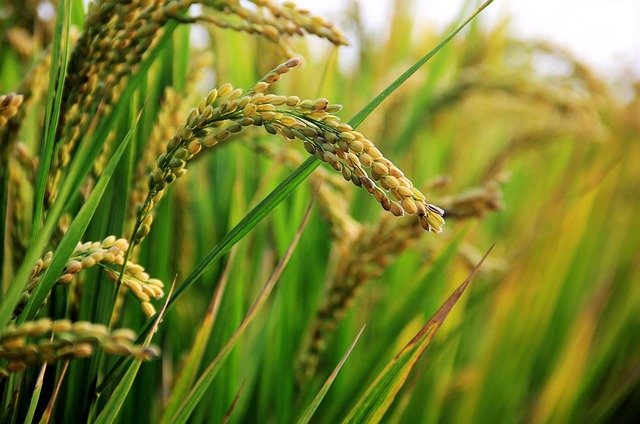
Rabi Crops
- Grown in the winter season in India (October – March)
- Eg: Wheat, gram, pea, mustard and linseed
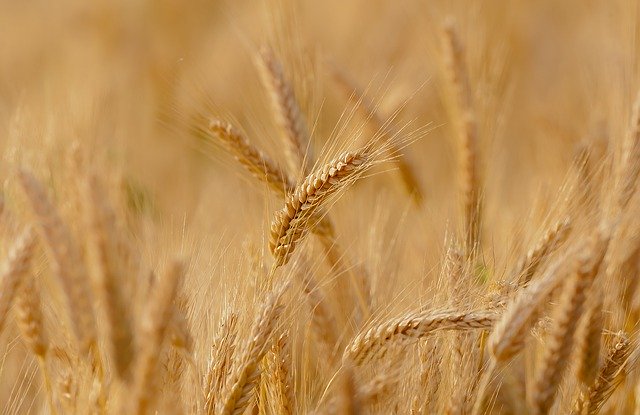
Pulses and vegetables are grown in the summer
Agricultural Practices
- Preparation of soil
- Sowing
- Adding manure and fertilisers
- Irrigation
- Protecting from weeds
- Harvesting
- Storage
1. Preparation of soil
- It is important to prepare the soil before growing a crop. The soil is turned and loosened.
- The process of turning and loosening the soil is known as tilling or ploughing
- Loosened soil
- It allows the roots to breathe easily
- Helps the growth of earthworms and microbes present in the soil. They are the friends of the farmer. They further turn and loosen the soil and add humus to it. Humus means decayed leaves for plants

The soil contains minerals, water, air and some living organisms. Dead plants and animals get decomposed by the soil organisms. The various nutrients in the dead organisms are released back into the soil, which are absorbed by the plants.
Tilling or ploughing
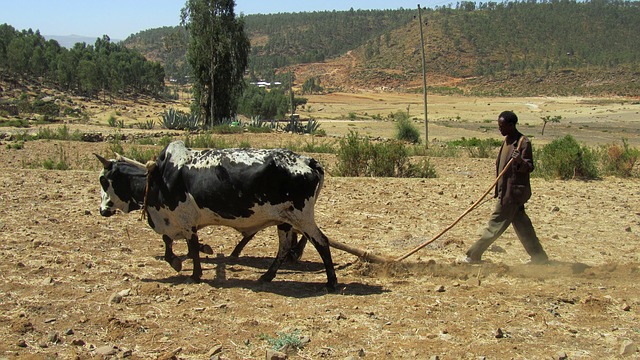
Traditional Ploughing 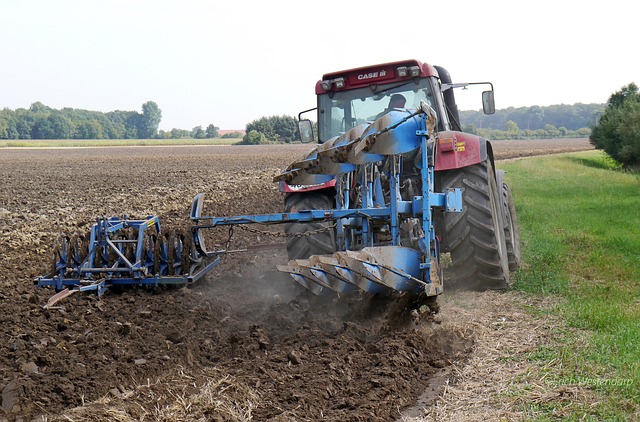
Modern Ploughing
- Done by using a plough
- Plough is made of wood or iron
- If the soil is dry it needs watering before ploughing
- Ploughed field may have big clumps of soil called crumbs.
- These crumbs should be broken and the field should be levelled for sowing and irrigation
- Sometimes, manure is added to the soil before ploughing. When the field is ploughed manure is mixed with the soil evenly.
- The soil is moistened before sowing
Agricultural implements
Breaking of the soil clumps
- Tools used:
- Plough,
- Hoe and
- Cultivator
Plough
- Traditional tool
- Made of wood or iron
- Drawn by a pair of animals (bulls, horses or camels)
- The plough contains:
- Ploughshare (triangular iron strip)
- Plough shaft (long a log of wood)
- Handle at one end of the shaft
- Beam attached to the bulls’ necks
- One pair of bulls and a man can operate the plough
- The plough is used for:
- tilling,
- Adding the fertilizers,
- Removing the weeds and
- Turning the soil
Hoe
- Used for removing the weeds and for loosening the soil
- Has a long rod of wood or iron, and a broad bent plate of iron at another end
Cultivator
- The ploughing is done by a tractor driven cultivator
- It saves labour and time
2. Sowing
- Good quality clean and healthy seeds are selected before sowing
- High yielding seeds are preferred for sowing
- Separation
- The seeds are put in the water and the damaged seeds float on it
- Tools
- Traditional tools: a funnel like tool
- Modern Tool: Seed drill
- It sows seeds uniformly at equal distance and depth
- Ensures the covering of seeds

- Paddy is first grown in the nursery
- Seedlings are transplanted to the field
3. Adding manure and fertilizers
- These substances are added to the soil
- They supply nutrients to the plants for their healthy growth
Manuring
- The plants get minerals and nutrients from the soil. Due to the continuous cultivation of crops the soil becomes deficient of nutrients
- In order to replenish the soil with nutrients, the farmers add manure to the soil. This process is known as manuring.
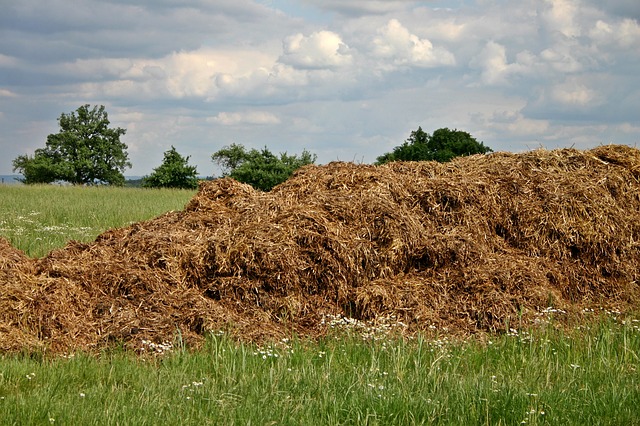

What is Manure and How is it obtained?
Manure is an organic substance obtained from the decomposition of the plant or animal wastes (such as cow dung).
The farmers dump the plant and animal wastes such as cow dung in pits at open places. The microorganisms present in the soil decompose these solid wastes. The manure thus obtained is added to the field and it replenishes the soil with nutrients.
Fertilizers
- Fertilizers are in-organic chemicals that are rich in a specific nutrient. They are made in factories.
- Examples: Urea, ammonium sulphate, super phosphate, potash, NPK (nitrogen, phosphorus, potassium)
- Better yield of crops such as wheat, paddy and maize is achieved with the help of fertilizers
Disadvantages of fertilizers
- The excessive use of fertilizers will make the soil less fertile
- They are a source of water pollution

The fertilizers should be substituted with the organic manure or the field should be left uncultivated (fallow), for maintaining the fertility of the soil
Advantages of organic manure
- Improves the soil texture
- Helps the soil retaining its water capacity
- Replenishes the soil with nutrients
- Facilitates the exchange of gases by making the soil porous

Is there any alternate method of replenishing the soil nutrients?
Crop rotation helps the soil replenishing with its nutrients. It means growing of different crops alternately.
For instance, wheat and legumes are grown alternately during different seasons.
It helps the soil replenishing with its nitrogen.

The rhizobium bacteria present in the nodules of roots of leguminous plants converts the atmospheric nitrogen in to the usable form and release it into the soil.
4. Irrigation
- The supply of water at regular intervals
- Water
- It is needed for the survival of the plants
- Important for proper growth and development
- The roots of plants absorb minerals and fertilizers along with the water. Nutrients dissolved in the water are transported to all parts of the plant
- Plants contain nearly 90% water
- Germination of seeds take place only under wet conditions
- Protects the crop from both Frost and hot air currents
- Maintaining the moisture of the soil health the crop growing healthily. Hence the fields should be watered irregularly
Tips:

The time and frequency of irrigation varies depending on the crop, soil and season.
The frequency of watering is higher in the summer
Sources of irrigation
- Wells
- Tubewells
- Ponds
- Lakes
- Rivers
- Dams
- Canals
Traditional methods of irrigation
- Moat (pulley-system)
- Chain pump
- Dhekli
- Rahat (lever system)
Motor pumps are used for lifting water. They are run by diesel or biogas or electricity or solar energy
Modern methods of irrigation
- Sprinkler system
- Drip system
Sprinkler system
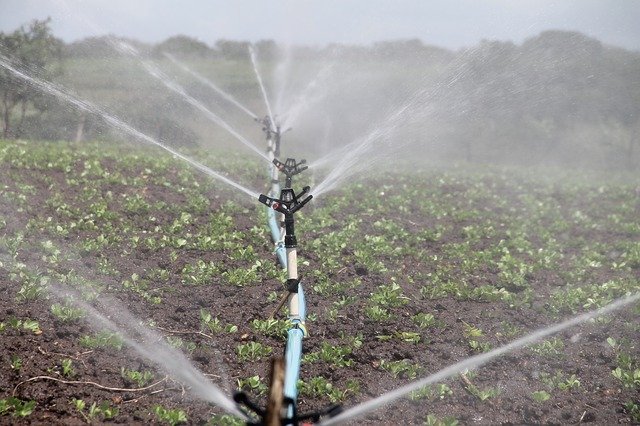
- It is useful on uneven land with insufficient water
- The motor pump is connected to a main pipeline which is connected to perpendicular pipes having rotating nozzles on top. The motor pump gets the water from the well and pushes it to the main pipeline with high pressure.
- The water escape from the nozzles and gets sprinkled on the crop, as if it is raining
- Applications – Used in lawns and coffee plantations
Drip System
- Water falls drop by drop directly near the roots
- Very useful in regions with water scarcity
- Water is not wasted at all
- Applications – Used fruit plants, gardens and trees
5. Protection from weeds
- Undesirable plants growing naturally in the fields are known as weeds
- Weeding is the process of removal of weeds
- The suitable time for weeding is, before the weeds producing flowers and seeds.

Why is weeding (removal of weeds) necessary?
- Weeds compete with crop plants. They take up the water, nutrients, space and light required by the plants, thereby affecting the growth of the crop.
- Some weeds interfere in harvesting and may be poisonous for animals and humans
Methods of weeding
- Tilling before sowing
- Manual removal of weeds by uprooting or cutting them time to time. Khurpi is used for this task.
- Uprooting of weeds using seed drills
- By spraying certain chemicals called weedicides. They kill the weeds without damaging the crops.
Drawback of weedicides – They may affect the health of the farmers
Safety measure to be taken while spraying weedicides
The farmers should use the chemicals (weedicides) carefully. They should cover their nose and mouth with piece of cloth during spraying.
6. Harvesting
- Harvestin is the cutting of crop after it is mature
- The crops are pulled out or cut close to the ground
- It takes from 3 to 4 months for the cereal crops to mature
Methods of harvesting
- Manual process using sickle
- Using a machine called harvester
- Threshing – the process of removing grains from the chaff. This is done by a machine called combine. It is a harvester cum thresher.
Winnowing
The separation of grain and the husk can also be done by small winnowing machines
7. Storage
- The harvested grains should be protected from the moisture, insects, rats and microorganisms, when the they are kept to be for a longer time.
- The grains should be dried in the sun to reduce the moisture.
- The grains stored in jute bags or metallic bins. The silos and granaries are used to store the grains on a large scale
Protection from pests and microorganisms
- Grains are stored in silos and granaries
- Dried neem leaves are used for storing grains at home
- Specific chemical treatments are used when the grains are stored on a large scale in big godowns
Food from animals
The rearing of animals involves the provision of proper food, shelter and care. When the rearing is done on a large scale it is called animal husbandry
External Links – Useful Videos
Video showing Rahat Irrigation:
Video Showing Various Methods of Irrigation

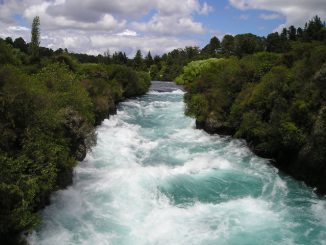

Be the first to comment